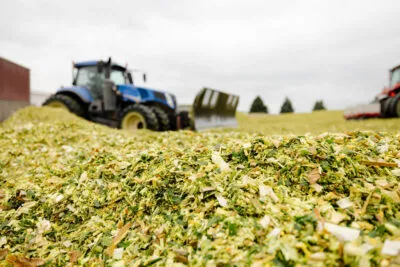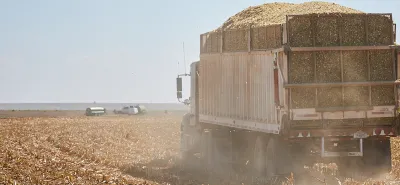How to Work with Drought-stressed Corn Silage
Maintaining proper moisture levels all season long can be the difference between a good yield and a bad one!

Moisture is important for Pollination
Obviously, moisture is key during our hottest months! Proper moisture levels help pollination happen, which is vital. But even after pollination, moisture is important because plants with limited moisture can abort young kernels to focus resources in viable kernels. Therefore, grain yield can be reduced to up to 50% if moisture is a limitation during pollination.
Proper Moisture for Better, More Nutritious Yields
Without good moisture, plants affected during vegetative stages will not grow as they should, which can potentially affect the overall yield of silage. Fewer kernels will affect starch concentration, and stressed plants usually accumulate more lignin (indigestible fiber). Thus, you end up with silages with lower energy values.
Corn utilizes an average of 24 and 27 inches of water per acre during an entire season. Establishing a good root system early in the season will play a substantial role on the moisture conditions of the plants during a drought event. However, there is a trick to it. Early season can make the root system too shallow, while ideal moisture (near field capacity). Early season helps the plant build a root system deep enough that will reach moisture from deeper in the soil in dryer periods of the season.
When to Harvest Drought-stressed Corn Silage?
Plants that went through drought stress around pollination time will have fewer kernels, while their leaves can hold greater moisture than they appear to hold. Combined, these aspects can make the assessment of dry matter by field practices (milk line, appearance, time from emergence) very tricky.
This is particularly important because silage fermentation will be impaired if harvested too early or too late. Using on-farm techniques (Koster ovens, microwave oven, NIR) to measure plant’ dry matter concentration are recommended. Field-by-field assessment of plants’ dry matter is even more important, due to the increased variability of moisture.
Risks to be aware of with drought-stressed corn silage:
Nitrates
can accumulate in toxic concentrations in any drought-stressed forage. Nitrates can be a greater challenge in heavily nitrogen-fertilized or manure applications fields. Consider the following when the likelihood of toxic concentrations of nitrates in you corn crop is high:
- Higher chopping will bring less nitrates to the silo as it accumulates heavily in the lower part of the corn plant.
- Do not harvest right after rain; waiting at least a week after rain is recommended.
- Nitrates can be converted to nitrogen dioxide (NO2) shortly after ensiling, a reddish-brown toxic gas. Do not approach a silo that was under these conditions for 7 to 14 days.
Molds
proliferation is greater in hot and dry conditions, which increases the mold load in the silo. Controlling spoilage will be a greater challenge at feed-out. Pack well and cover the silo as quickly as possible to impair mold proliferation during the silo filling. Heterofermentative bacteria, like L. buchneri and L. diolivorans, can help to control mold.
Consult one of our silage experts (HERE) to know more about how BONSILAGE can help you!


